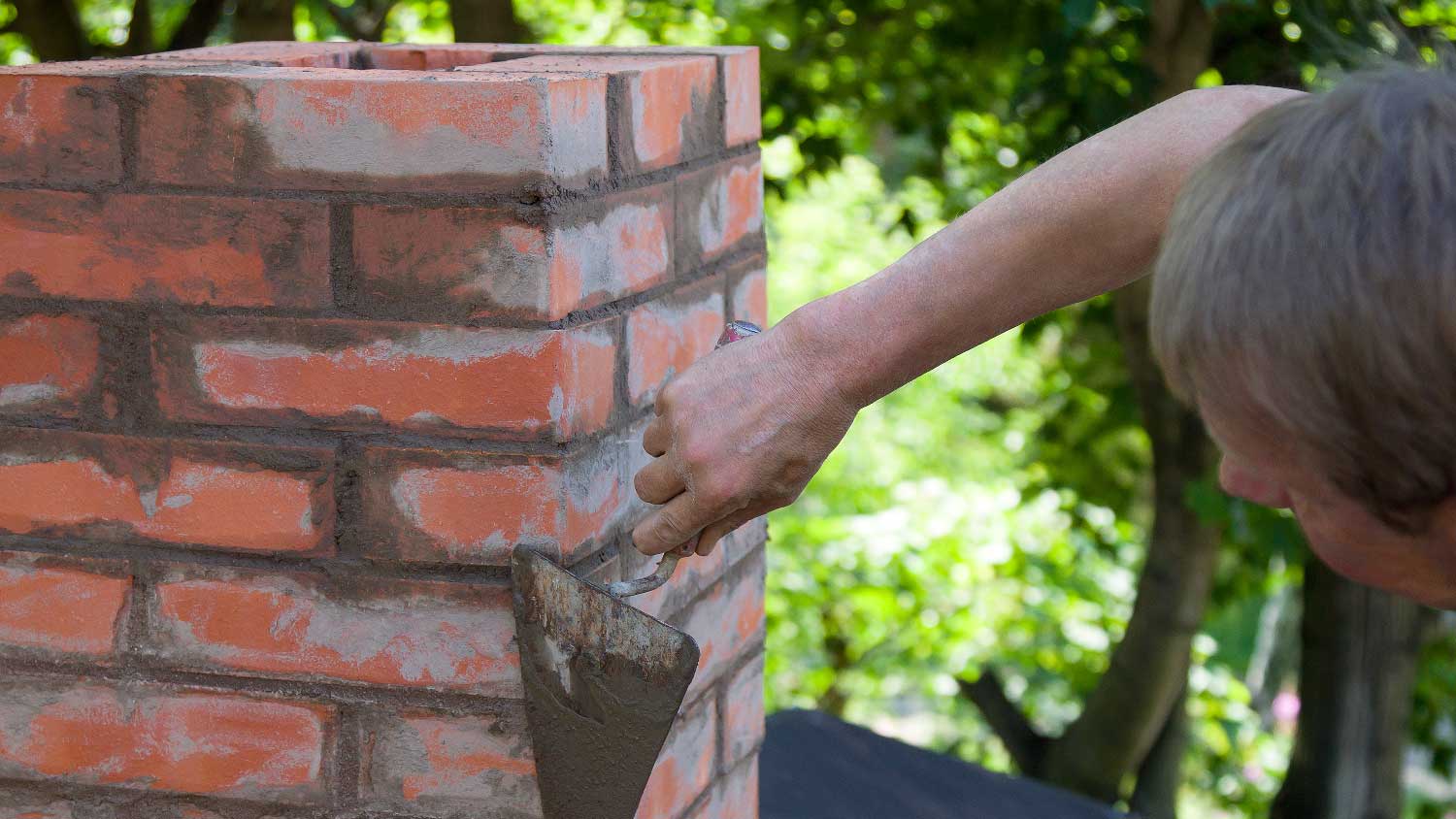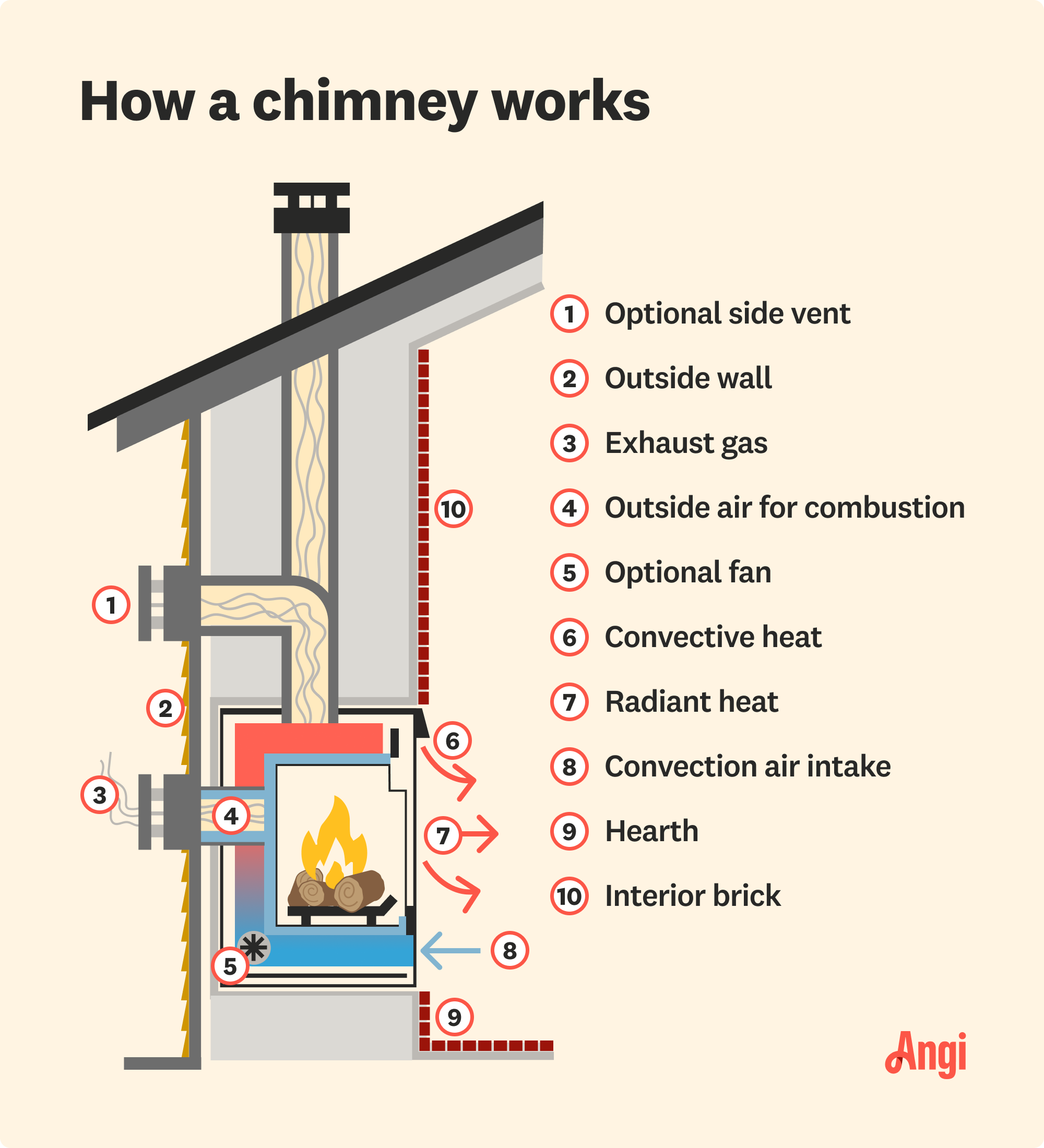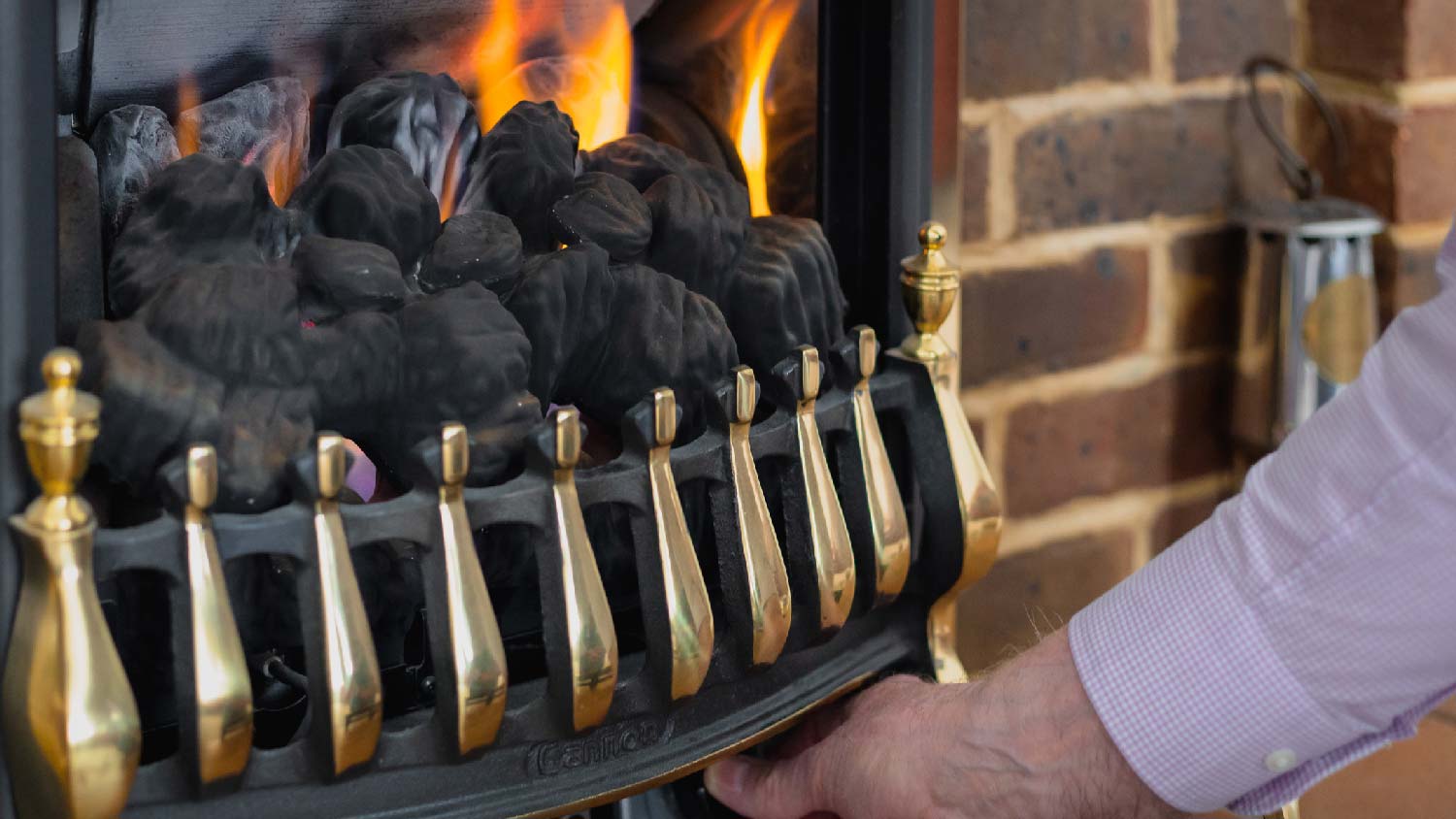
Discover the average chimney tuckpointing cost, key price factors, and expert tips to help you budget and save on your next chimney repair project.
Remember, ventilation is everything


Gas fireplaces typically burn cleaner than wood fireplaces.
Direct vent gas fireplaces don’t need a chimney but do have an exhaust pipe.
Ventless gas fireplaces are installed without a chimney or venting pipe.
Gas fireplaces are popular for their convenience, efficiency, and the cozy atmosphere they create. But a common question is: Does a gas fireplace need a chimney? While they usually don't require one, you’ll want to make sure the room is ventilated properly when using your gas fireplace in order to keep your home environment healthy.
There two common types of gas fireplaces: direct vent and ventless. Neither requires a traditional chimney the way a wood-burning fireplace does. But when using a gas fireplace, you’ll want to make sure your room is well-ventilated in order to preserve your indoor air quality. Below, we take a closer look at the unique features, benefits, and drawbacks of direct vent and ventless gas fireplaces.

Direct vent fireplaces have a sealed combustion system, a key feature for maintaining good indoor air quality. This system draws air from the outside for combustion rather than using the air inside your home. When the gas burns, the combustion byproducts, such as carbon monoxide and water vapor, are expelled back outside through a venting pipe. This setup helps to keep harmful gases out of your home, protecting your indoor environment from pollutants.
These units offer some flexibility when installing. A venting pipe can be routed through an exterior wall or roof, providing homeowners with more placement options. A local chimney pro can help you choose the best spot for the venting pipe.
Indoor air quality is protected thanks to a vent that expels combustion byproducts outside the home. Also, vented systems are more energy-efficient than traditional wood-burning fireplaces because they lose less heat during operation.
While these fireplaces offer flexibility in placement, the installation of the venting system can be more complex and costly compared to ventless models. Depending on your home’s design, routing the vent pipe may require cutting through walls or roofing, which adds to the overall installation cost.

Ventless gas fireplaces are often used to create ambiance rather than as a heat source, and they burn gas with the intention of producing minimal combustion byproducts. These units draw air from the room for combustion and release the byproducts—including carbon dioxide, water vapor, and trace amounts of carbon monoxide and nitrogen dioxide—directly back into the living space. Because they don’t vent to the outside, emissions stay within the home, which can impact indoor air quality over time.
One of the key advantages of ventless gas fireplaces is their ease of installation. Since they don’t require a venting system, they can be placed almost anywhere in a room, offering unmatched flexibility in terms of location and design.
Without the need for a chimney or venting system, installation is generally straightforward and less expensive. This makes ventless fireplaces a popular choice for those looking to add a fireplace to their home without significant construction.
The biggest drawback of ventless fireplaces is the potential impact on indoor air quality. Since they release combustion byproducts into the room, there’s a risk of accumulating harmful gasses like carbon monoxide, especially in poorly ventilated spaces. This can pose serious health risks over time. It’s why ventless fireplaces are banned in California and have restrictions in Massachusetts.
Additionally, the water vapor produced during combustion can increase indoor humidity levels, potentially leading to condensation, mold growth, and other moisture-related problems.
Remember, it is essential to ensure that any ventless fireplace you install meets local building codes and includes an oxygen depletion sensor, which automatically shuts off the unit if indoor pollutants reach unsafe levels.
The majority of residential fireplace projects involve hiring a pro to replace or alter an existing fireplace. The second most popular project is the installation of a new fireplace. The choice between a vented and ventless fireplace could affect whether you want to remodel your fireplace or install a new one. For example, you’ll need a chimney or venting pipe for a vented fireplace, while ventless fireplaces are more efficient and fit into more spaces—but they’re prohibited in some areas.
A gas fireplace professional can advise on the best option for your home and ensure it is adequately ventilated.
From average costs to expert advice, get all the answers you need to get your job done.

Discover the average chimney tuckpointing cost, key price factors, and expert tips to help you budget and save on your next chimney repair project.

If you’re experiencing chimney airflow problems, a new damper may be in order. Use this guide to learn what goes into your chimney damper replacement cost.

Chimney repair costs can vary by the type of chimney you have and the required repairs. Use this guide to help you estimate project costs.

Cracks in your chimney crown will grow over time and cause serious structural problems. Learn how to repair a chimney crown and prolong your chimney’s lifespan.

The process of how to paint a brick chimney comes with a few important caveats, but it’s definitely a worthwhile project to keep your brick strong and in good shape.

If your chimney has structural damage, a partial or complete chimney rebuild is the only way to continue safely enjoying your fireplace.